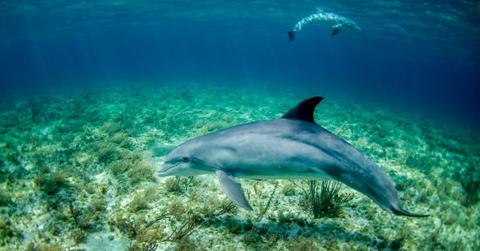Aquatic Antiquity: Largest Dolphin Skull, Over 16 Million Years Old, Found in Amazon River

scientists uncovered the fossilized skull of a giant river dolphin in the Amazon River.
Scientists in the Amazon have uncovered the fossilized skull of a giant river dolphin, now extinct.
This ancient cetacean once stretched up to an impressive length of 11.5 feet. An expedition stumbled upon the find in 2018 along the Napo River.
Shedding light on the find, researchers recently published their findings in a paper titled “The largest freshwater odontocete: A South Asian river dolphin relative from the proto-Amazonia” in Science Advances.
Identified as Pebanista yacuruna, the newfound species pays homage to the Yacuruna, a mythical creature of Peruvian lore dwelling in the deep waters, according to Reuters.
Paleontologist Rodolfo Salas, one of the study's contributors, shared this insight. Lead author Aldo Benites-Palomino placed the fossil within the Platanistoidea family, a lineage of dolphins that once roamed the waters approximately 16 to 24 million years ago.
Benites-Palomino highlighted the precarious state of modern river dolphins, hinting at their impending peril similar to their ancient kin.
Speaking to The Guardian, he recounted the astonishment of discovering the fossil, a mere fragment of a jaw, during a casual stroll with a friend. The revelation that it belonged to a species distantly related to South Asian river dolphins, separated by thousands of miles, added to the astonishment.
Co-author John Flynn, curator of fossil mammals at the American Museum of Natural History, elaborated on the ancient dolphin's habitat, a landscape vastly different from the modern Amazon.
- What Lies Beneath: NASA Scientist Believes Aliens May Have Found 'Perfect' Hiding Spot in Earth's Oceans
- Global Threat: Russia Insider Warns West of 'World War Using Nuclear Weapons' Amid Escalating Support for Ukraine
- Countdown to Disaster? Ex-NATO Official Warns Russia, Iran and China Could Wage WWIII in Just Years
He painted a picture of expansive wetlands, including the Pebas mega-wetland system, where the fossil dolphin once thrived. Such discoveries, he emphasized, enrich our understanding of Earth's history and the evolution of Amazonian biodiversity.
Researchers noted similarities between Pebanista and present-day South Asian River dolphins, particularly their advanced facial structures facilitating echolocation. These adaptations, crucial for navigating murky waters and hunting prey, hint at Pebanista's fish-centric diet, similar to its modern counterparts.
Never miss a story — sign up for the Front Page Detectives newsletter. Be on the scene the moment news breaks.
The demise of Pebanista, as theorized by scientists, coincided with the transformation of its ancient wetland habitat into the modern Amazon, altering ecosystems and food sources irreversibly.
Benites-Palomino drew parallels between the challenges faced by modern river dolphins and their extinct relatives, underscoring urbanization, pollution and mining as grave threats.
He warned against the fate of China's Yangtze River dolphins, now extinct due to similar pressures, urging concerted efforts for the conservation of these unique aquatic species.
Become a Front Page Detective
Sign up to receive breaking
Front Page Detectives
news and exclusive investigations.
